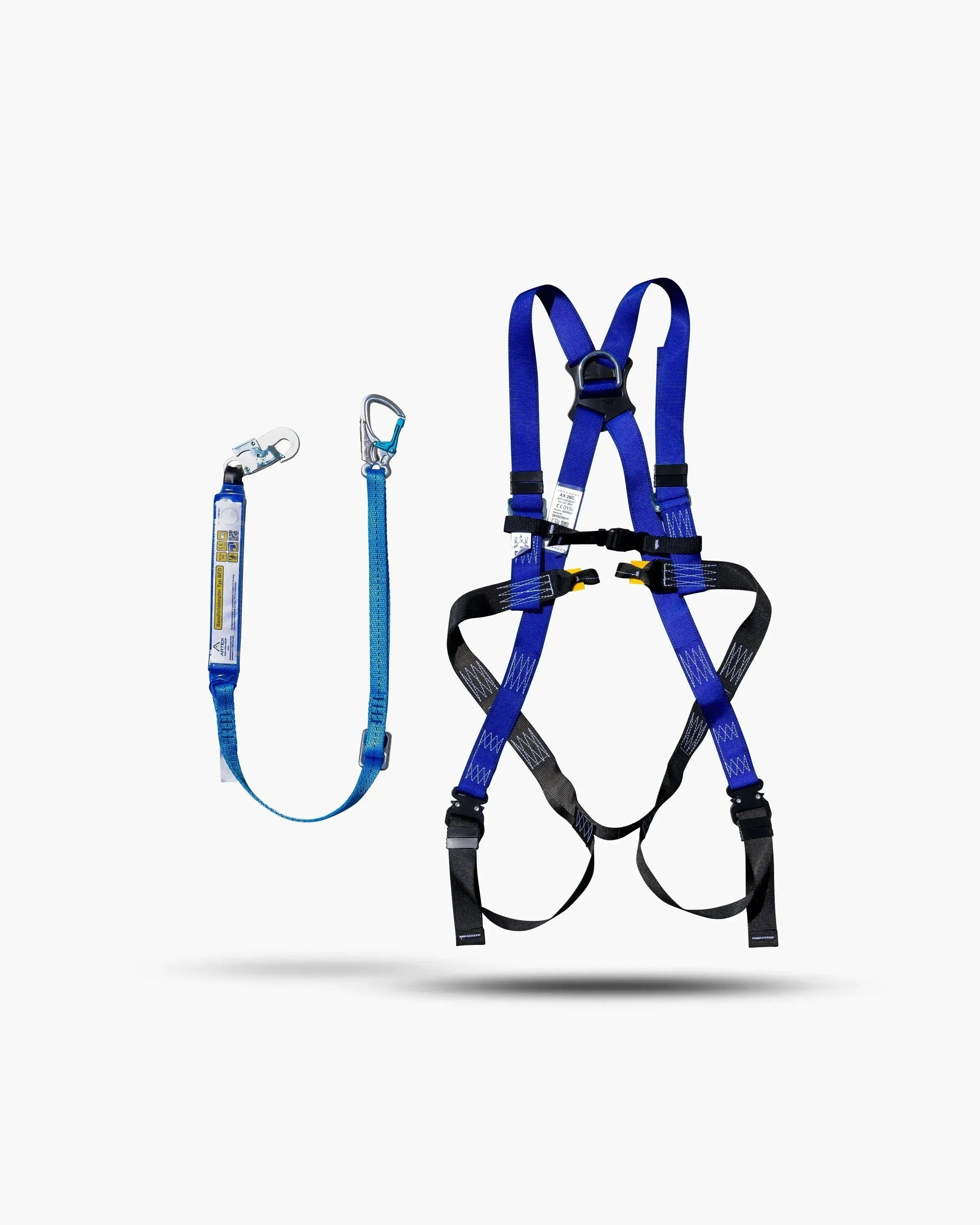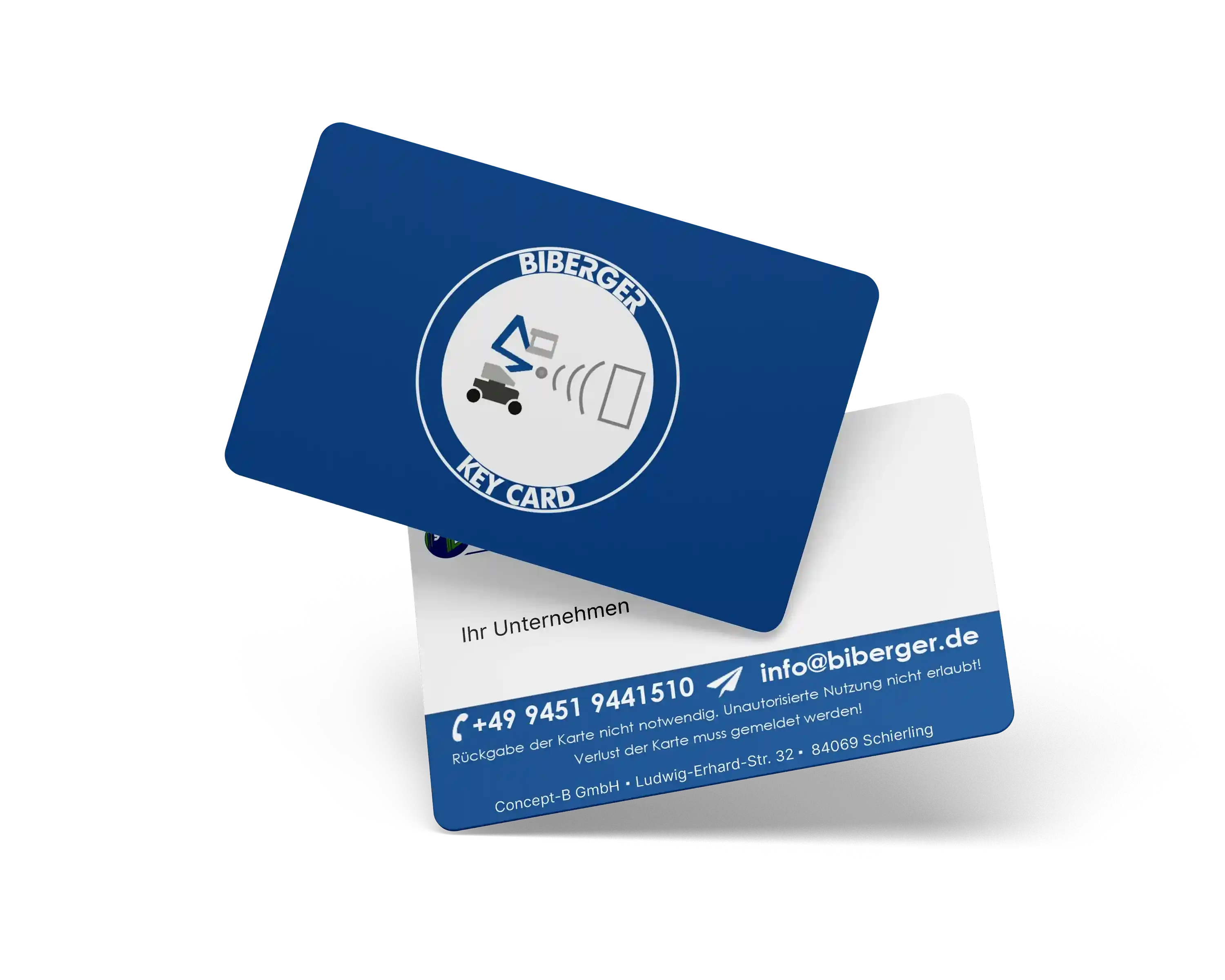Whether in the warehouse, on the factory premises or during quick maintenance work – the question always arises: Is a work basket for the forklift sufficient for working at heights, or is a fully-fledged work platform required?
What seems practical in the short term can quickly become a safety risk or even a legal problem. Not every application is permitted with a personnel basket – and not every work at height can be performed safely with a forklift.
In this article, you will learn what the differences are between a forklift work basket and a real work platform, which regulations apply, and when you can use which solution.
We'll show you where the risks lie, what advantages professional stages offer, and how you can stay on the safe side, both legally and practically.
Work platform or work basket
The most important differences
While these two appear similar at first glance, they differ considerably in practice. A forklift work basket is attached to the forks of a forklift truck and is primarily used for occasional maintenance work at height.
A true aerial work platform (e.g., a mobile elevating work platform or scissor lift ), on the other hand, is a standalone machine with a chassis, control system , and integrated safety systems. While forklift baskets often offer a load capacity of 240 to 300 kg, aerial work platforms are designed for maximum load capacity, flexibility, and continuous use, as well as significantly greater heights and reach.
Comparison table
| Forklift work basket | Real work platform | Attachment work basket (e.g. Merlo/Magni) | |
|---|---|---|---|
| Independent control |  |
 |
 |
| Approval for work at height | Restricted |  |
 |
| Emergency lowering system |  |
 |
 |
| Self-propelled |  |
 |
 |
| DGUV-compliant | Only with restrictions |  |

|
| Use for regular work |

|
 |
 |
| load capacity | approx. 240–300 kg | up to over 1000 kg | 300–1000 kg |
| Operation from the work area |  |
 |
 |
| Integrated security features |  |
 |

|
| Daily use recommended |  |
 |

|
Work baskets for forklifts
Advantages
A work basket for forklifts is quickly ready for use, cost-effective, and compact. It's particularly useful for short-term jobs, such as repairs to a hall ceiling or replacing a light bulb.
Some models are foldable, allow for space-saving storage, and are quickly mounted with a Euro-style forklift attachment or bolts. For occasional use, such a simple safety cage can be a practical addition.
Disadvantages
What seems practical on paper has clear limits: According to the DGUV, work baskets for forklifts may only be used for "occasional work".
It lacks its own controls, has a smaller footprint, and poses significant risks if the forklift is operated incorrectly. Furthermore, its use is only permitted with a TÜV-certified work basket that complies with accident prevention regulations.
The forklift must also have sufficient load capacity – it is not uncommon for the permissible load of the forklift to be underestimated when the forks are fully extended.
What is allowed – and what is not?
The use of work platforms for forklifts is only permitted if all requirements according to DGUV Rule 100-500 are met: only occasional work at heights, training of personnel, TÜV-tested cages, secured access pockets, and a safety bar at the access door. Continuous use or repairs without suitable PPE and documented training may result in employer liability in the event of damage.
Special work baskets for telescopic forklifts are a special case
However, not every work basket is the same – especially when it's attached to a telehandler (e.g., from Merlo or Magni ). These baskets are not traditional forklift baskets, but are considered "fully-fledged" attachments for forklifts, provided they are approved by the manufacturer and correctly connected.
The big difference: These systems have an electrical or hydraulic connection to the machine, allow control directly from the basket and are often equipped with safety features such as load monitoring, tilt sensors and emergency lowering.
They therefore offer significantly more protection for up to two people than simple safety cages for industrial trucks and can, in many cases, also be used for recurring work at height.
Nevertheless, the following applies: Use is only permitted and legally protected in combination with the appropriate device, the appropriate control system and instructions.
Real work platforms
Advantages
Aerial work platforms such as articulated telescopic platforms or scissor lifts are designed to enable work at heights safely, efficiently and comfortably.
They have their own drive, a control system directly in the basket, and numerous safety features such as emergency lowering, tilt sensors, and automatic brakes. Models with load capacities of over 300 kg and a large work surface offer space for two people plus equipment. Ideal for storage, assembly, and maintenance work with maximum working heights of well over 70 meters.
Disadvantages
The biggest disadvantage for many companies is the price: A professional aerial work platform is more expensive to purchase than a work basket. The space required and the operator training requirements are also perceived as barriers. Nevertheless, no improvised solution can replace the safety and functionality, and renting machines is cost-effective, especially for medium- and long-term projects.
Why they are often the better choice
Anyone who regularly works at heights should opt for a professional access platform. They are designed for continuous use, reduce the risk of accidents, and allow for precise positioning. Precise control is essential, especially for sensitive tasks such as ceiling repairs, installations, or warehouse work at height. In addition, many access platforms are now compact, foldable, and equipped with a high load capacity – making them suitable for use in any warehouse.
Personnel basket & safety basket
How to work safely on a forklift
If a work basket is used, it must comply with the applicable legal regulations.
This includes:
- a secure entry door with a bolt or safety bar,
- a closed back wall,
- sufficiently high railings,
- non-slip base and
- the correct shot on the narrow side.
Important: The connection to the forklift's forks must be secured with bolts or chains to prevent slipping. No one is allowed to work in the basket without proper training and PPE (personal protective equipment against falls from a height).
Pallet as a "work platform"
Unfortunately, this is a common occurrence in practice: a Euro pallet is placed on the forks, a colleague is placed on top, and work begins. But one thing is clear: pallets are not approved as personnel handling equipment. They offer neither a non-slip surface nor side guards or fall protection.
The total weight is also uncontrollable – splinters, the risk of tipping over, and a lack of secure fastening make pallets a dangerous tripping hazard. According to the German Social Accident Insurance (DGUV), the use of pallets as "work platforms" is expressly prohibited. If you want to play it safe, use a certified work basket for a forklift or—better still—a real work platform.
Gitterbox as a work platform
In some companies, a wire mesh box is used for spontaneous work at heights – quickly lifted onto a forklift, climbed in, and done. However, as practical as this solution may seem at first glance, a wire mesh box is not an approved work basket and, according to the German Social Accident Insurance (DGUV), may not be used as a work platform under any circumstances.
It lacks basic safety features such as a secure access door, a non-slip floor, a secure barrier, or a secure connection to the forks. The load capacity is also not designed for people. In an emergency, the use of a wire mesh container can have fatal consequences – technically, legally, and in terms of liability. Anyone who wants to work safely and in compliance with the law should rely on certified work baskets or genuine aerial work platforms.
Approval, DGUV & regulations
This is what the DGUV says about work baskets
The German Social Accident Insurance (DGUV) is clear: Work baskets may only be used when other safer means of access (e.g., ladders, platforms) are impractical. Their use is permitted only "occasionally," for example, for one-time maintenance or short-term repairs.
Note the total weight
A common mistake when using work baskets for forklifts is misjudging the total weight. This includes not only the weight of the work basket itself—the weight of the people, tools, and materials must also be taken into account.
It's important to note that the permissible residual load capacity of the forklift with the forks extended may be significantly lower than expected. Exceeding the permissible total weight not only risks instability, but in an emergency, also risks tipping over or failure of the lifting hydraulics.
Therefore, pay attention to the load capacity according to the load diagram of your forklift and plan with safety reserves - especially when working at greater heights or with two people in the basket.
Who is liable in the event of an accident involving a work basket?
If an accident occurs with an unapproved or incorrectly used work basket, the responsibility lies with the operator or employer .
The employer's liability insurance association can demand compensation, and insurance companies can deny coverage. Failure to provide training, improper safety measures, or use of unauthorized work (e.g., regular work at height without a real work platform) can result in criminal or liability consequences.
Conclusion: Two systems, one goal – but big differences
Safety is paramount – and professional stages are cheaper than you think
A forklift basket isn't a permanent solution. Anyone who regularly works at heights shouldn't improvise. Modern work platforms offer safety, comfort, and efficiency – and thanks to rental or used equipment, they're now more cost-effective and flexible than many people think.
If you want to work safely, you should pay attention not only to the technology but also to the responsibility.















Share:
Short or long wheelbase? Influence on maneuverability, traction, and load distribution
Straight line or driveway? Realistically plan the reach of work platforms